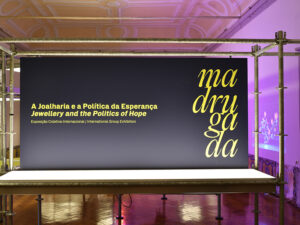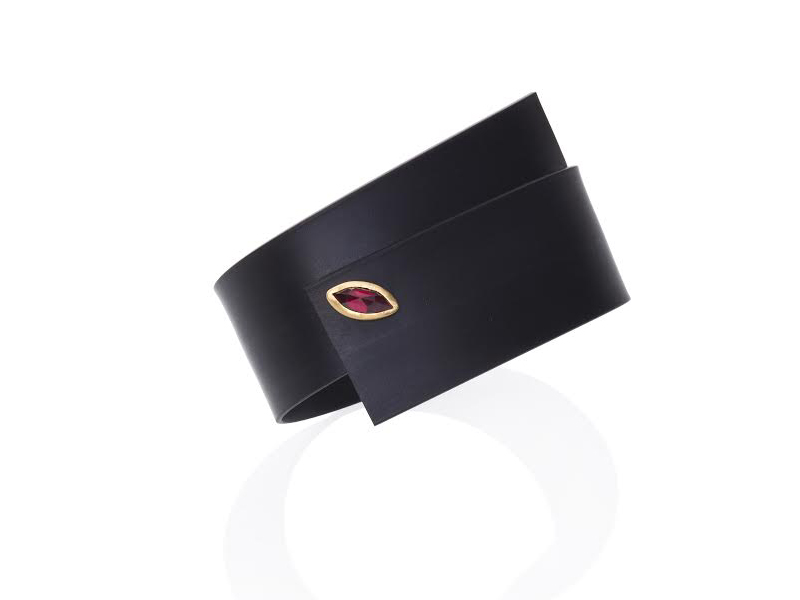
Orly Wexler is an Israeli jewelry artist and designer who creates effortless, modern jewelry by integrating silicone and rubber seamlessly with precious metal and gemstones. In this interview, we talk about her exhibition, New Jewelry, at Gravers Lane Gallery in Philadelphia.
Olivia Shih: You were born in Israel and currently live there. Could you share with us how your background and education influenced your current work in jewelry?
Orly Wexler: I studied at Bezalel Academy of Arts and Design in Jerusalem in the department of industrial design. Jerusalem is a unique city where east meets west. The atmosphere in Jerusalem, and the people who are living there, are so different from any other place that I have visited. You can see traditional and modern living together in design, art, and architecture. These influences are reflected in shapes and colors, with one eye to the past while the other looks to the future. Living in Jerusalem gave me the opportunity to explore different approaches and to convert the human variety into shapes. It is a one-of-a-kind city.
I also studied at Omanit School of Jewelry Design & Metal Work in Tel-Aviv, and it was also a bit like Jerusalem, because it was in Jaffa, which is also a very interesting city with a mixture of cultures, people, and colors, and a view of the sea.
Now I live and work in Tel Aviv, which is a cosmopolitan city like any other city in the world.
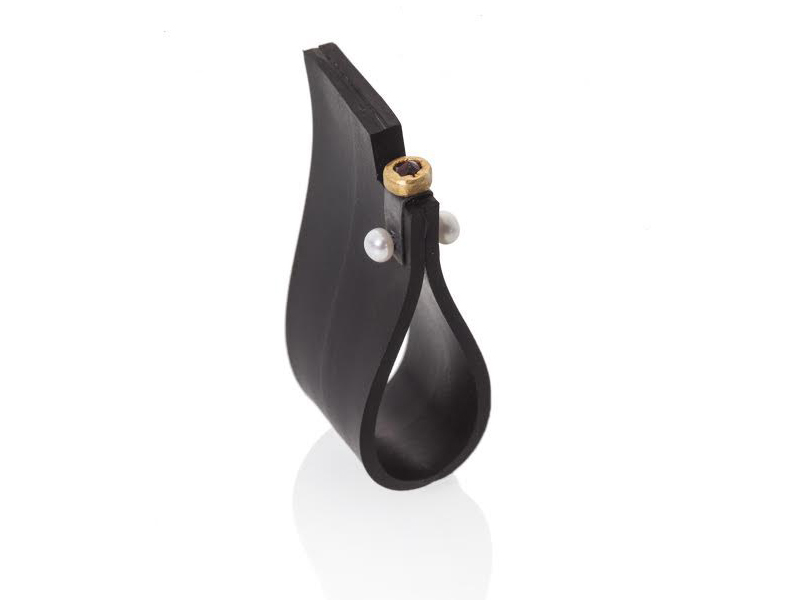
You’ve worked as an industrial designer, a graphic designer, and a jeweler. Do these identities ever intersect in your jewelry work?
Orly Wexler: Yes, all of them have an influence on my work. I approach jewelry design from a different point of view, and I think you can see that in the shapes, colors, and structures that I use. This creative language comes from all the steps and the experience I gained in the three different areas of design that I studied, and they are reflected in my work.
Rubber and silicone are two unexpected materials that often pop up in your work. What draws you to these industrial materials?
Orly Wexler: When I started working, I made a few traditional jewelry designs, but very soon I was drawn to new materials and new combinations. I find it very interesting to combine classic design and modern materials, and to bring traditional stone-setting to my world.
When I first began working with the rubber and the silicone, it was not easy, and did not appeal to potential clients. People were confused. It still raises a lot of questions!
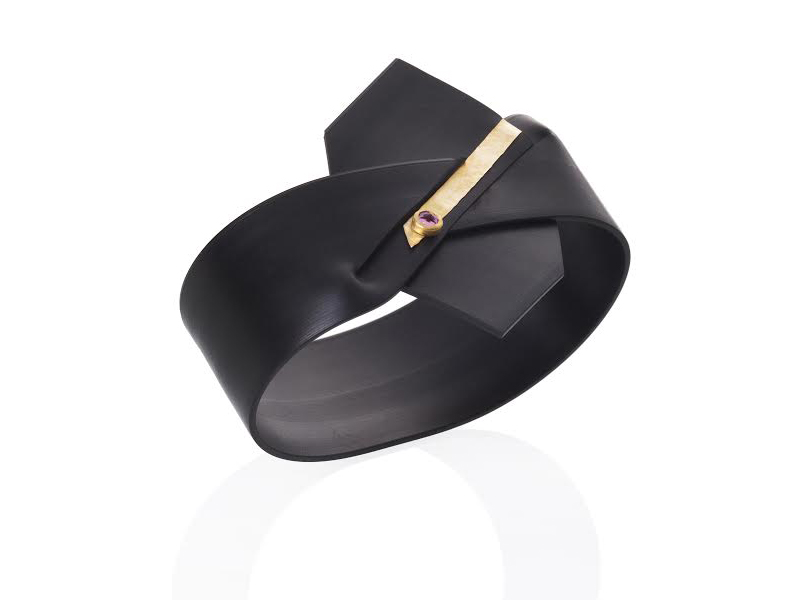
For your exhibition, New Jewelry, at Gravers Lane Gallery, your colored silicone rings immediately catch the gaze with candy colors and luscious textures. Why the fun color choice in this particular set of rings?
Orly Wexler: At the beginning, I used black silicone, but when I saw the colored silicone, it felt like being in a candy shop, and stimulated new designs.
I love colors and I wanted to have a new, fun way of looking at rings. The colors of the silicone, an inexpensive and industrial material, and the colors of the stones and the gold intensify and empower the fun!
The feel on the finger or hand when you wear a ring or bracelet made of silicone is completely different from a metal ring—it is light, flexible, and comfy.

Could you tell us what a working day in your life looks like?
Orly Wexler: Any creative work involves hard work and a lot of frustration. Every project is a new struggle.
Jewelry making is not as easy as it looks. When I get to see what I was looking for, it is a very happy moment for me.
What are your thoughts on contemporary art jewelry produced in Israel? What is the contemporary jewelry scene like there?
Orly Wexler: The designers in Israel are very talented with fresh new ideas. It is an international design.
In addition to the Bezalel department in Jerusalem, a jewelry design department opened at Shenkar College of Engineering and Design in Ramat Gan in 1998. In spite of our geographic location, designers from Israel are often invited to hold solo shows and participate in group exhibitions in Europe and the USA. The public recognition of the field has grown. Organizations like AIDA, the Association of Israel Decorative Arts, were started to develop designers and introduce them to galleries in the USA and Europe.
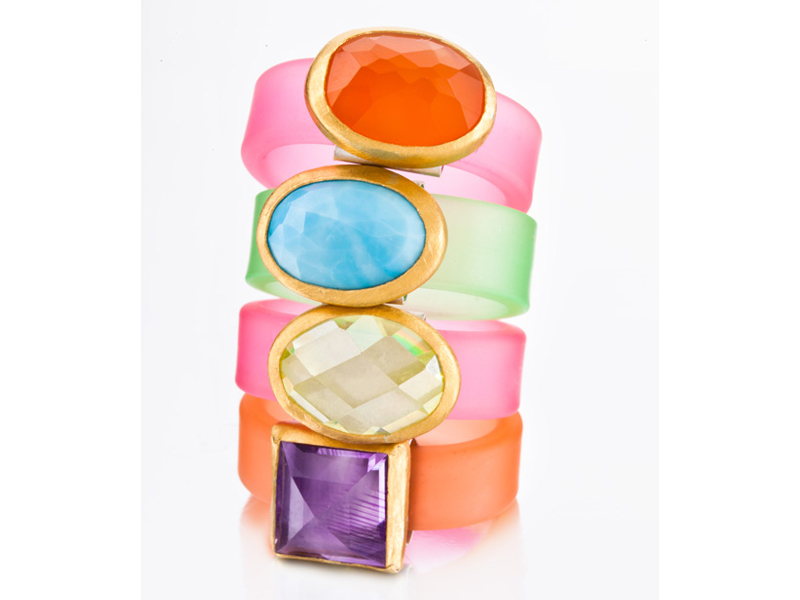
Could you name three Israeli jewelry artists who particularly inspire you, and could you explain why?
Orly Wexler:
Yaacov Kaufman
I would like to refer to Yaacov Kaufman, who was one of my teachers at Bezalel. He continues exploring basic geometric formations, featured in an exhibition in the Tel Aviv Museum of Art called Running in Circles. In the show was a selection of studies in the morphology of the circle, through various applications—art, design, mechanics, architecture, etc. He has created various typologies of the round form, emerging and vanishing, the circle as a technical device and typography. The objects he creates are functional or not—it is only the way you look at it.
Esster Knobel
Esster Knobel started a new movement in jewelry design in Israel. She participated in major exhibitions, as well as a solo exhibition at the Israel Museum. I feel she represents an alternative way of looking at a piece of jewelry.
I think that both of them provide an unusual perspective of how jewelry should look or be worn, and what kind of material you can use.
 Have you heard, read, or seen anything recently that you could share with our readers?
Have you heard, read, or seen anything recently that you could share with our readers?
Orly Wexler: In the Tel Aviv Museum of Art there is an exhibition of Vered Kaminski’s work: Artificial Stones. She received the 2015 Andy Prize for Contemporary Crafts. This exhibition presents serious research of materials and shapes, and shows a different approach to the material she is using. I find her research very inspiring.
Thank you.
AJF has decided to begin posting the prices of pieces in the gallery shows we are highlighting each month. The price range for the work in New Jewelry is $80 to $900.

